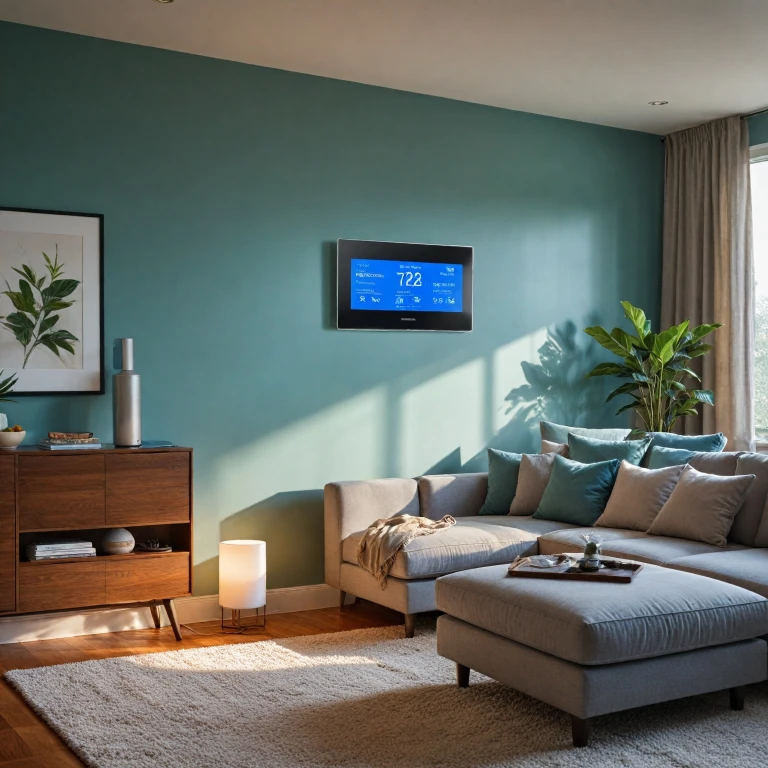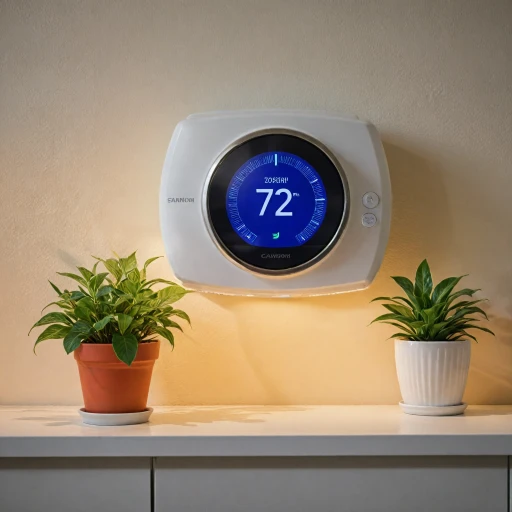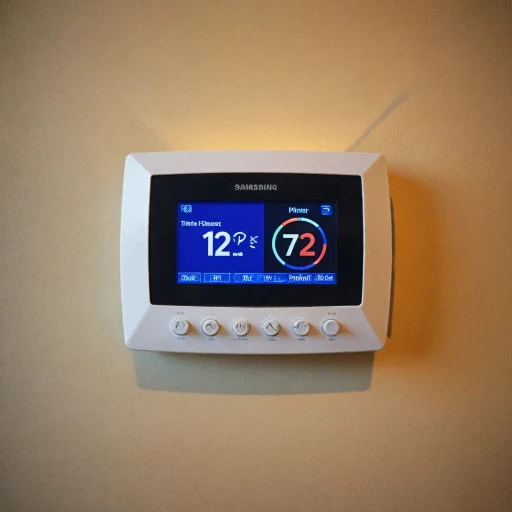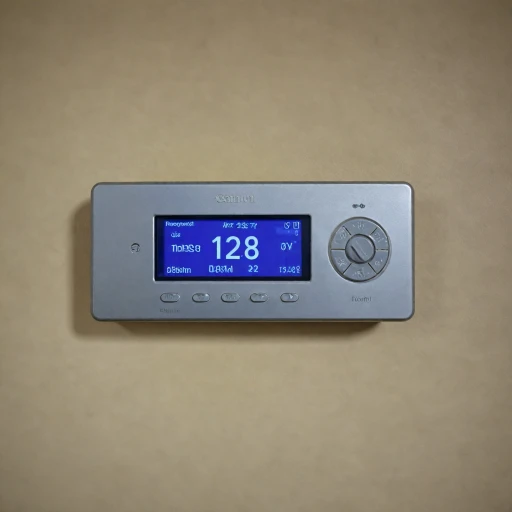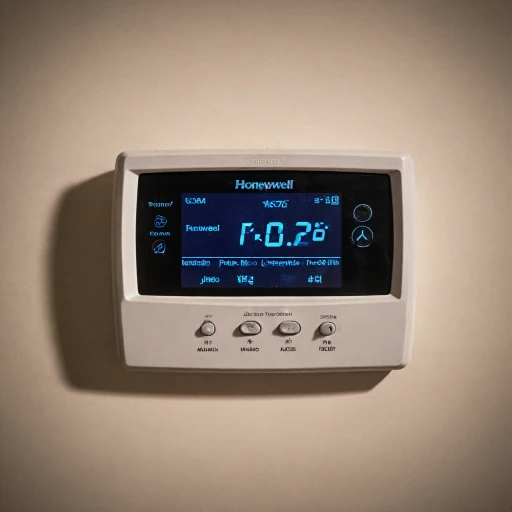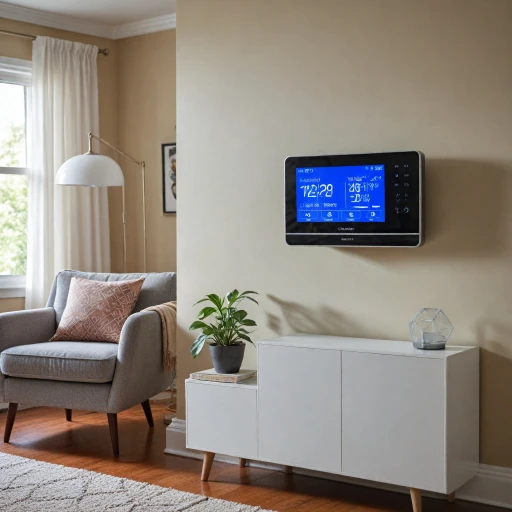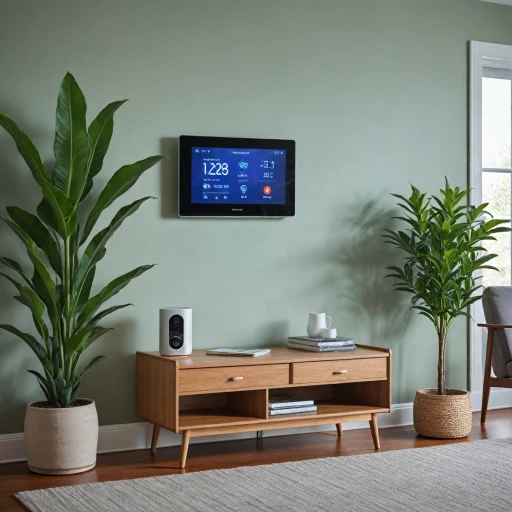
Understanding Remote Sensing Technology
Unveiling the Magic of Remote Sensing Technology
Remote sensing technology in smart thermostats is a game-changer, altering how we perceive home climate control. Unlike traditional thermostats, which often depend on a single point of temperature measurement, remote sensing thermostats utilize multiple sensors to monitor temperature across different rooms. This innovation allows for a more precise and tailored adjustment of heating and cooling systems, significantly enhancing comfort.
These sensors can often connect wirelessly, allowing for flexibility in placement and integration with other smart home devices. Popular brands like Ecobee and Honeywell offer models equipped with remote sensors, making it easier to maintain a consistent climate throughout your home.
The benefit of this approach lies in its ability to control room temperatures more effectively. By gathering data from multiple points, the system can optimize performance and save energy, making remote sensing thermostats a valuable investment for those concerned with energy efficiency and lowering utility bills. For more insights on how you can enhance your comfort with a remote-controlled thermostat, you might find further exploration beneficial.
This advancement doesn’t just stop at enhanced comfort; it opens doors to smarter energy control, paving the way for potential energy savings and more sustainable living. The technology scales with your needs, enabling you to enjoy a customized living environment that evolves with technological advancements.
As we delve deeper into this topic, we will explore the numerous benefits, potential challenges, and latest trends in smart thermostat technology, providing you with a comprehensive understanding of what remote sensing thermostats bring to the table.
Benefits of Remote Sensing Thermostats
Unlocking Efficient Comfort with Smart Technology
Smart thermostats equipped with remote sensing technology have revolutionized the way homeowners manage their heating and cooling systems, offering significant advantages over traditional thermostats. By incorporating advanced technology, these devices help enhance comfort, improve energy efficiency, and offer user-friendly experiences. One of the main benefits is the ability of smart thermostats like the Nest Learning or Ecobee models to seamlessly integrate remote sensors. These sensors monitor the temperature across different rooms, allowing the thermostat to adjust settings to ensure a consistent and comfortable climate throughout the entire home. This feature is particularly beneficial for multi-room properties where temperature distribution can vary significantly. Energy savings stand out as a key advantage of adopting this technology. By optimizing heating and cooling schedules based on real-time temperature data from remote sensors, users can significantly reduce their energy consumption. This not only helps in cutting down on utility bills but also contributes to a more sustainable lifestyle by reducing carbon footprint. User interface and convenience are further enhanced with smart thermostats. With app integration, homeowners can easily control their heating settings from anywhere using their smartphones. Products like the Honeywell smart thermostats or Google Nest offer intuitive platforms where users can schedule temperature changes, monitor energy usage, and receive alerts about system status, all contributing to improved convenience and control. Moreover, many models come with "learning" capabilities, where the thermostat automatically adjusts to the homeowner’s preferred temperature settings over time. This reduces the need for manual inputs and ensures that the home remains at optimal comfort levels without constant intervention. For those interested in upgrading their home comfort systems, enhancing home comfort with a remote control thermostat is certainly worthwhile. Considering products that feature remote sensors, energy-efficient operations, and user-friendly apps can significantly improve not just comfort, but also the overall home experience.Challenges in Implementing Smart Thermostats
Implementing Smart Thermostats: Common Challenges
As the popularity of smart thermostats continues to rise, many homeowners are eager to install units like the Honeywell smart thermostat or the Ecobee smart variants. While these devices offer unparalleled comfort and convenience in managing home temperatures, there are some challenges that need consideration.
One significant issue is the compatibility with existing HVAC systems. Not all heating and cooling systems are equipped to integrate with smart technology. This can be especially problematic for older systems that lack modern wiring setups. An easy install often requires ensuring that the necessary C-Wire is present; if not, alternative powering options for smart thermostats might be needed.
Another complication comes with connectivity. Smart thermostats rely on a stable internet connection to function optimally, communicating with remote sensors and allowing users to control their home’s climate from an app. Wi-Fi disruptions can limit the effectiveness of remote access, affecting energy savings.
Furthermore, user reviews often highlight the learning curve associated with mastering these technologies. While devices like the Nest learning thermostat offer user-friendly interfaces, the comprehensive features can be overwhelming. It’s essential for new users to spend time familiarizing themselves with product configurations and settings to fully leverage the energy savings these devices promise.
Maintenance can also be a concern. Remote sensors embedded in rooms need periodic checking to ensure they continue to accurately monitor temperatures. Regularly assessing these components can prevent potential heating and cooling inefficiencies.
Finally, while many brands like Ecobee and Google Nest emphasize security, the integration of smart devices into home networks can pose privacy concerns. Ensuring the app and thermostat software are updated can mitigate risks associated with unauthorized access.
For those navigating issues with a Honeywell thermostat, understanding the steps to reset and troubleshoot could prove beneficial in addressing most challenges. Co-producing solutions with manufacturers can lead to enhanced customer experiences, ensuring that the promise of increased comfort and control is met.
Comparing Remote Sensing Thermostats to Traditional Models
Evaluating Smart Thermostats Against Traditional Ones
When it comes to choosing between remote sensing thermostats and traditional models, several factors come into play. Traditional thermostats have long been the standard in many homes, but the advent of smart technology has introduced a new level of convenience and efficiency.
Traditional thermostats generally rely on a single temperature sensor located in one room, which can lead to uneven heating or cooling throughout the house. In contrast, smart thermostats, like those from Honeywell and Ecobee, utilize multiple remote sensors that can be placed in different rooms. This allows for a more balanced temperature distribution, enhancing overall comfort.
Energy Efficiency and Savings
One of the most significant advantages of smart thermostats is their potential for energy savings. By using advanced algorithms and learning capabilities, products like the Nest Learning Thermostat and Ecobee Smart Thermostat can adjust heating and cooling based on your habits and preferences. This can lead to significant reductions in energy consumption and cost savings over time.
Traditional models lack these smart features, often resulting in higher energy bills due to less precise temperature control. Smart thermostats can integrate with apps and smart home systems, offering users the ability to control their home’s temperature remotely, further enhancing energy efficiency.
Installation and Usability
While traditional thermostats are generally straightforward to install, smart thermostats might require more effort, especially if they involve integrating with existing smart home devices. However, many smart thermostats are designed for easy installation, often requiring just a few wires to connect.
Smart thermostats offer a more user-friendly experience with intuitive interfaces and remote control capabilities via apps. This contrasts with the manual adjustments required by traditional models, making smart thermostats a more convenient choice for tech-savvy homeowners.
Customer Feedback and Reliability
Customer reviews often highlight the reliability and user satisfaction associated with smart thermostats. Products like the Google Nest and Honeywell Smart Thermostat receive high marks for their ease of use and energy-saving features. In contrast, traditional thermostats, while reliable, lack the advanced features that modern consumers often seek.
In summary, while traditional thermostats have served homes well for decades, the advantages of smart thermostats in terms of energy efficiency, convenience, and comfort make them a compelling choice for those looking to upgrade their home’s heating and cooling systems.
Tips for Choosing the Right Remote Sensing Thermostat
Consider Your Home's Specific Needs
When selecting a remote sensing thermostat, it's essential to consider your home's specific needs. Are you looking to optimize comfort in a particular room or throughout the entire house? Understanding your heating and cooling requirements will help you choose a product that fits your lifestyle. For instance, if you have a large home, investing in a thermostat with multiple remote sensors, like the Ecobee smart thermostat, can provide more precise temperature control.
Compatibility with Existing Systems
Ensure the smart thermostat you choose is compatible with your existing HVAC system. Not all thermostats work with every type of heating or cooling setup. Some models, like the Honeywell smart thermostat, offer broad compatibility, but it's always wise to double-check. Also, consider whether you need a thermostat that works with smart home systems like Google Assistant or Amazon Alexa for voice control.
Ease of Installation
For those who prefer a straightforward setup, look for thermostats advertised as easy to install. Many products, including the Nest Learning Thermostat, offer simple installation processes that don't require professional help. However, if you're not comfortable with wiring, you might want to consider professional installation to ensure everything is set up correctly.
Energy Efficiency and Savings
One of the primary benefits of smart thermostats is their ability to save energy. Look for models that offer energy savings features, such as learning capabilities that adapt to your schedule and preferences. Customer reviews can be an excellent resource for gauging how much you might save on energy bills with a particular model.
Product Reviews and Ratings
Before making a purchase, read reviews and ratings from other customers. These insights can provide valuable information about the thermostat's performance, reliability, and ease of use. Top-rated models often have a track record of customer satisfaction, which can be a good indicator of quality.
